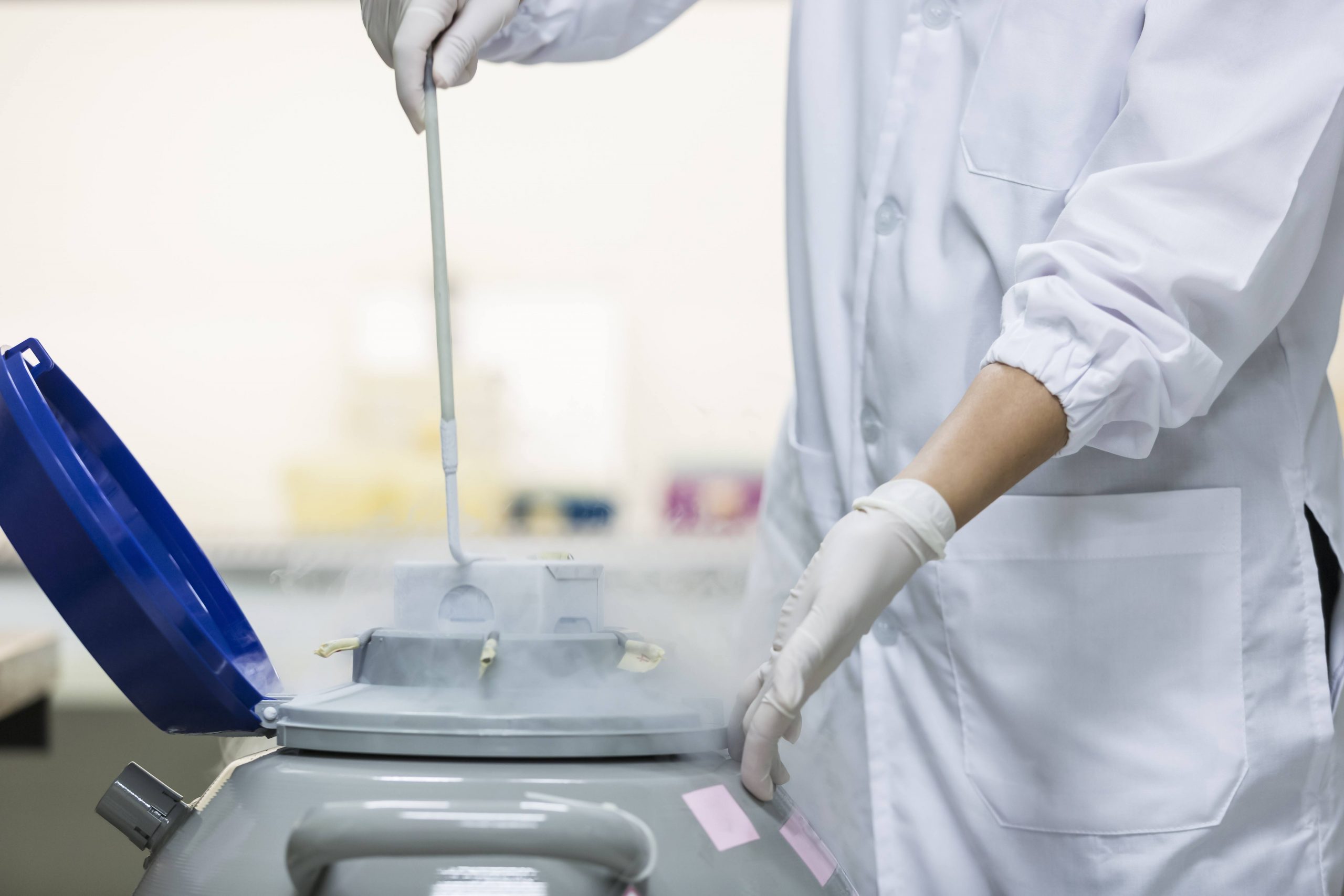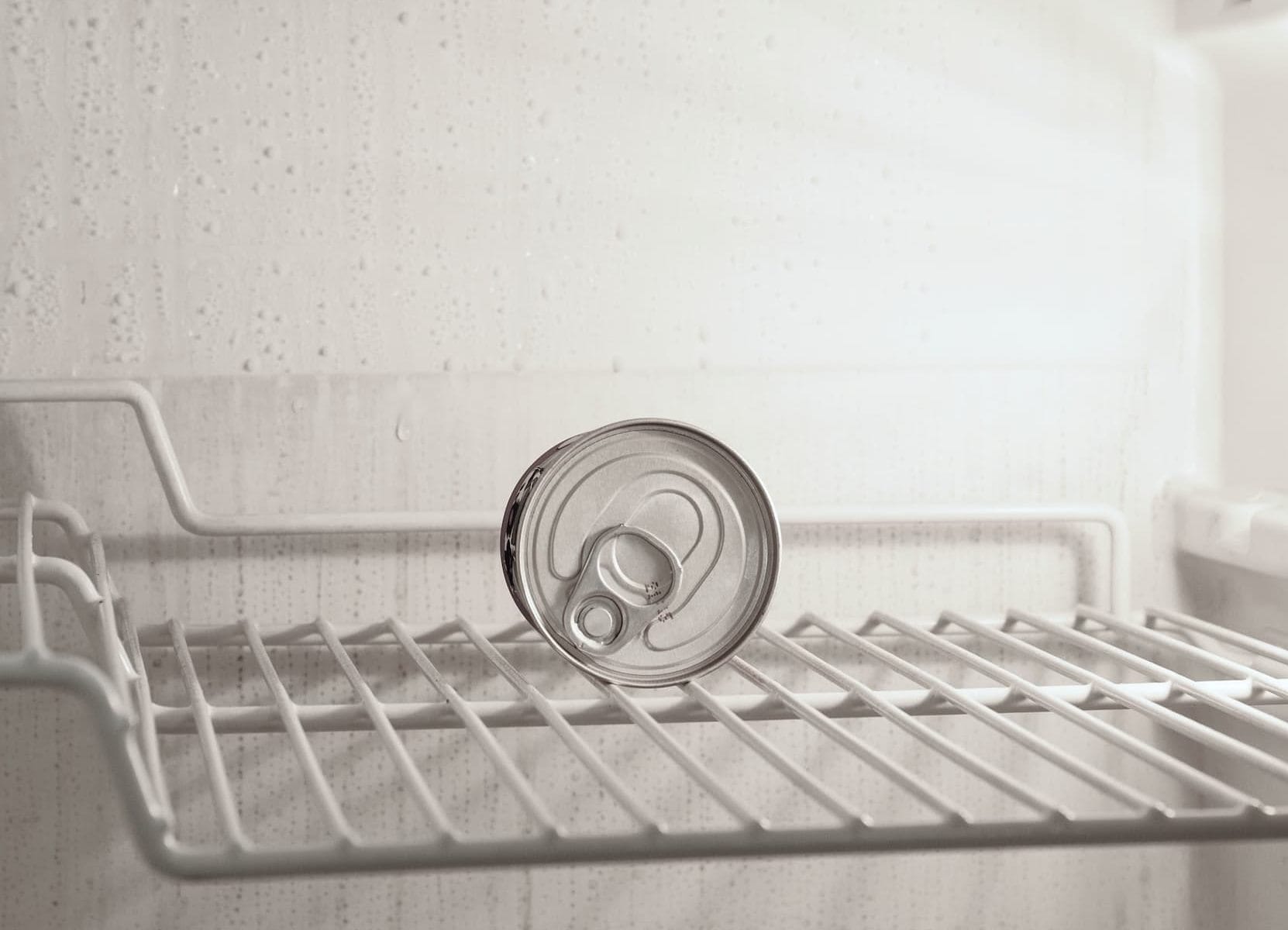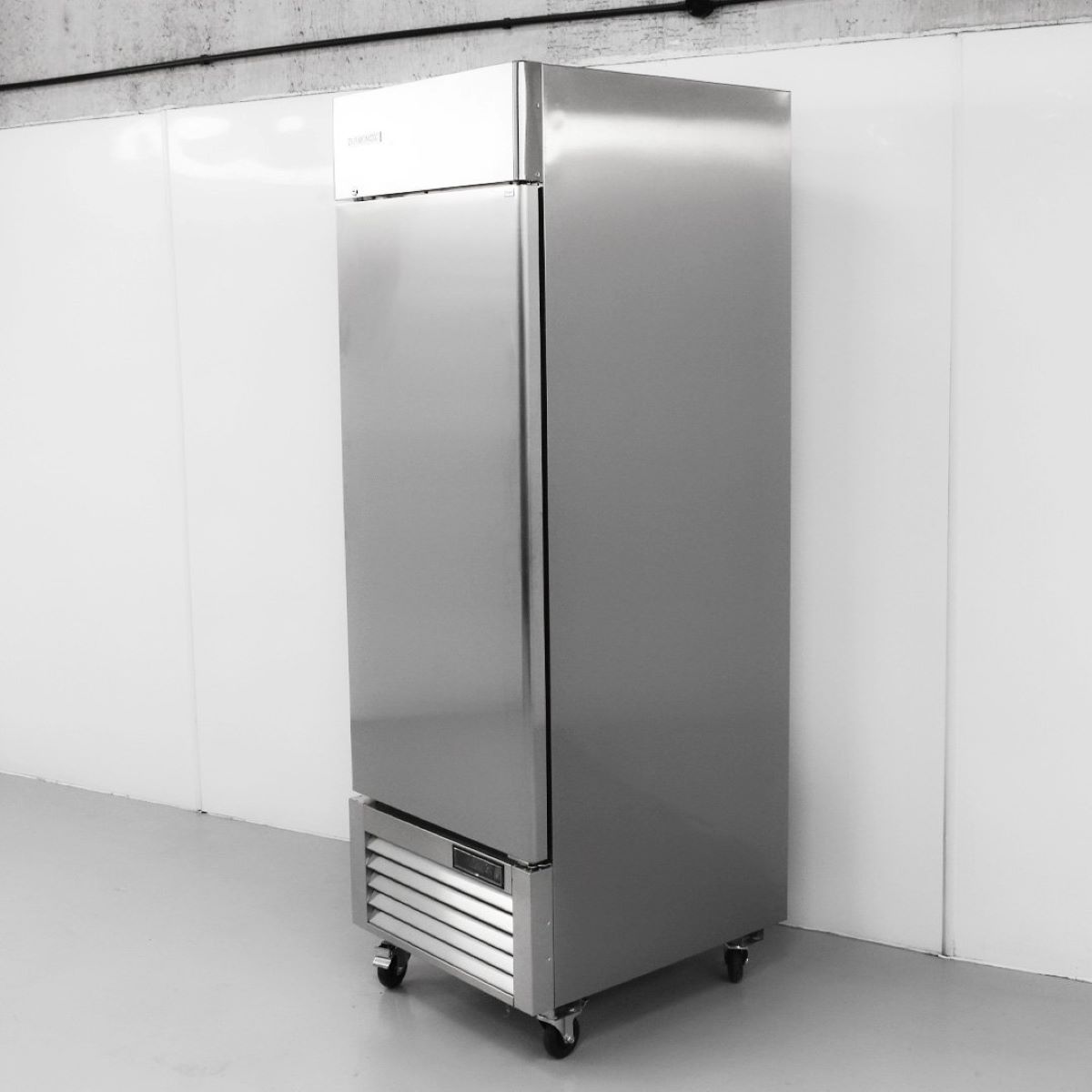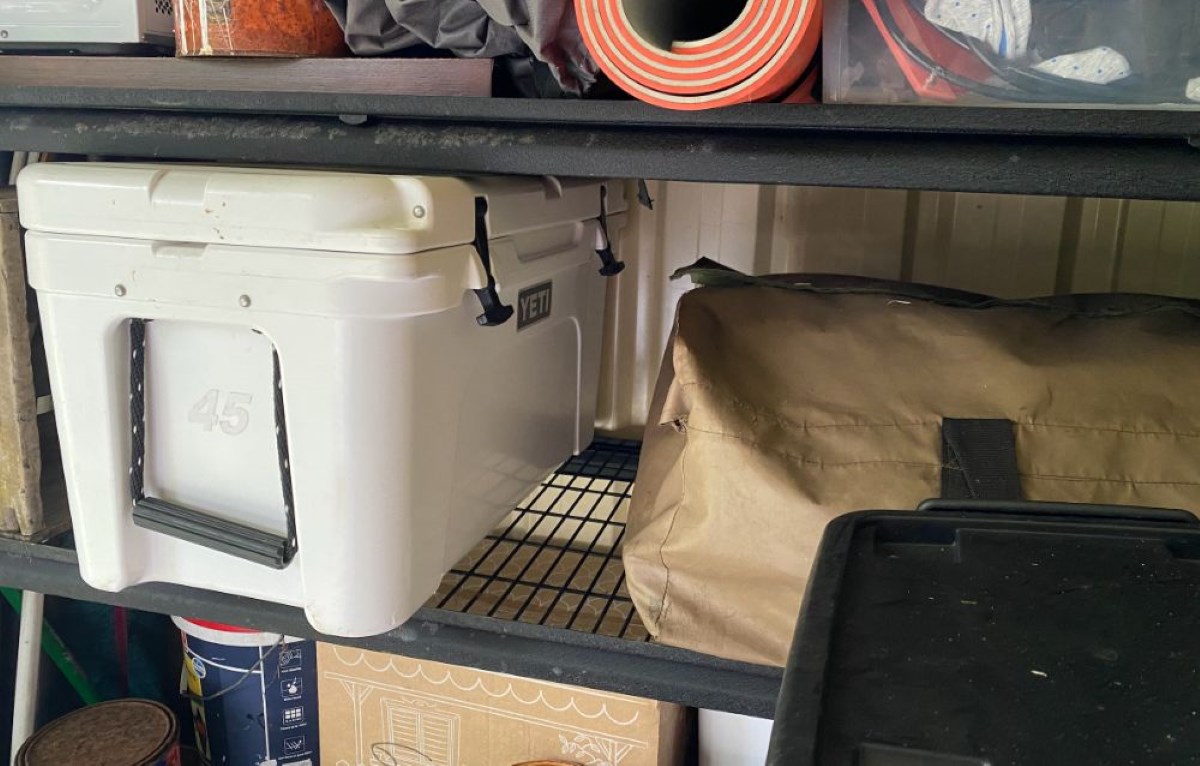

Articles
How To Store Sperm For Later Use
Modified: January 9, 2024
Learn the best methods for storing sperm for future use in this informative articles. Discover the benefits and considerations of sperm storage today.
(Many of the links in this article redirect to a specific reviewed product. Your purchase of these products through affiliate links helps to generate commission for Storables.com, at no extra cost. Learn more)
Introduction
Welcome to the world of sperm storage – a fascinating and increasingly common practice that allows individuals to preserve their fertility for later use. Whether you are considering sperm storage for medical reasons, such as before undergoing cancer treatments that may affect fertility, or simply for personal reasons, it is important to understand the process and make informed decisions.
Sperm storage, also known as sperm cryopreservation, involves freezing and storing sperm samples for an extended period of time. This method allows individuals to have a backup plan in case they are unable to conceive naturally in the future. Advances in technology have made it possible for sperm to be stored for many years without significant deterioration.
In this article, we will explore the various reasons why individuals choose to store their sperm and provide a step-by-step guide on how to effectively navigate the process. We will also discuss the importance of selecting a reputable sperm storage facility and offer insights into managing and utilizing stored sperm.
Whether you are a cancer patient wanting to preserve your fertility before undergoing treatments, a person planning to transition and preserve your chances of having biological children, or someone concerned about possible future infertility, this guide will provide you with valuable information to make informed decisions about sperm storage.
So, let’s dive into the world of sperm storage and uncover all you need to know about this remarkable process!
Key Takeaways:
- Sperm storage empowers individuals to preserve fertility for medical treatments, gender transition, delayed parenthood, family history of fertility issues, and age-related fertility decline. It offers proactive control over reproductive futures and peace of mind.
- Successful sperm storage involves thorough preparation, choosing a reputable facility, careful sample collection, proper freezing and storage, proactive management, and informed utilization. It’s a personalized journey with support and options for future parenthood.
Read more: How To Store Cake Batter For Later Use
Why Store Sperm
There are several compelling reasons why individuals may choose to store their sperm for future use. Let’s explore some of the most common motivations:
- Preserving fertility before medical treatments: One of the main reasons individuals opt for sperm storage is when facing medical treatments, such as chemotherapy or radiation, which can have damaging effects on fertility. By storing their sperm before these treatments, individuals can safeguard their ability to have biological children later in life.
- Planning for gender transition: Transgender individuals who are planning to undergo hormone therapy or surgeries that may impact their fertility often choose to store their sperm beforehand. This allows them to preserve the option of having biological children in the future if they wish to do so.
- Delayed parenthood: In today’s fast-paced world, many individuals prioritize their careers or personal goals before starting a family. By storing their sperm, they have the option to delay parenthood while ensuring the ability to have biological children when the time is right.
- Family history of fertility issues: If there is a known history of fertility problems in the family, individuals might choose to store their sperm as a precautionary measure. This allows them to overcome potential fertility challenges should they arise in the future.
- Preserving fertility due to age: As people age, fertility declines, especially for males. By storing sperm at a younger age, individuals can increase their chances of successful conception later on, even if their fertility naturally decreases.
These are just a few examples of why individuals may decide to store their sperm. It is a proactive and empowering choice that provides peace of mind and options for individuals to build families on their own terms.
In the next sections, we will delve into the process of preparing for sperm storage, choosing a sperm storage facility, collecting a sperm sample, and the intricacies of freezing, storing, and managing stored sperm. So, let’s continue our journey through the world of sperm storage!
Preparing for Sperm Storage
Before undergoing the process of sperm storage, there are several steps you should take to ensure the best possible outcome. Here are some key considerations:
- Consult with a fertility specialist: It is advisable to schedule an appointment with a fertility specialist or reproductive endocrinologist to discuss your individual circumstances and determine if sperm storage is the right choice for you. They can provide personalized guidance and address any concerns or questions you may have.
- Health evaluation: Your fertility specialist will conduct a thorough medical evaluation to assess your overall health and fertility status. This evaluation may include a physical examination, blood tests, and semen analysis to determine the quality and quantity of your sperm.
- Discussion of storage options: During your consultation, you will discuss the different storage options available to you. This includes deciding whether to choose private or public sperm storage facilities. Private facilities offer the advantage of confidentiality, while public facilities may be more affordable.
- Financial considerations: Sperm storage can be a significant financial investment. It is important to inquire about the cost of storage, including any fees associated with sample collection, freezing, annual storage, and eventual retrieval. Consider discussing the possibility of insurance coverage or financial assistance programs.
- Lifestyle factors: Certain lifestyle choices can impact sperm quality. To optimize the chances of successful sperm storage, it is important to maintain a healthy lifestyle. This includes avoiding tobacco, excessive alcohol consumption, and illicit drug use, as well as practicing safe sex to prevent sexually transmitted infections that can affect fertility.
- Legal considerations: It is essential to familiarize yourself with any legal implications or requirements surrounding sperm storage in your jurisdiction. Some countries or states have specific regulations regarding the storage of sperm, including time limits and consent forms. Consulting with a legal professional can provide clarity and ensure compliance.
By adequately preparing for sperm storage, you can approach the process with confidence and maximize your chances of successful storage and future use of your sperm.
In the next section, we will delve into the crucial aspect of choosing a reliable and reputable sperm storage facility. So, let’s keep moving forward on our journey!
Choosing a Sperm Storage Facility
When it comes to selecting a sperm storage facility, there are several factors to consider to ensure you choose a reputable and reliable option. Here are some key points to keep in mind:
- Accreditation and reputation: Look for a sperm storage facility that is accredited by a recognized organization, such as the American Association of Tissue Banks (AATB) or the College of American Pathologists (CAP). These accreditations signify that the facility meets stringent quality and safety standards. Additionally, read reviews and seek recommendations from trusted sources to gauge the facility’s reputation.
- Experience and expertise: Find out how long the sperm storage facility has been in operation and inquire about the experience and qualifications of the staff members. Choosing a facility with experienced professionals who specialize in reproductive medicine can provide peace of mind and increase the chances of successful sperm storage.
- Storage facilities and protocols: Inquire about the infrastructure and technology used for sperm storage. Ensure that the facility has reliable backup systems, proper temperature control, and secure storage units to protect your sperm samples. Additionally, ask about the protocols for sample retrieval and transportation, as well as any potential limitations on storage duration.
- Confidentiality and privacy: Your privacy and confidentiality should be a top priority. Choose a sperm storage facility that emphasizes strict confidentiality protocols, ensuring that your personal information remains secure throughout the storage process.
- Cost and fees: Consider the cost of sperm storage, including any upfront fees, annual storage fees, and any additional charges for sample retrieval or transportation. While cost is an important factor, it should not be the sole determinant of your choice. Remember to balance affordability with the facility’s reputation and quality of services.
- Location: Consider the location of the sperm storage facility. While it may be more convenient to choose a location near your home, prioritize the quality and reputation of the facility over proximity. Opting for a reputable facility may require occasional travel, but it will ensure the best possible storage conditions and future use of your sperm.
Take the time to research and visit multiple sperm storage facilities if possible. This will allow you to compare and assess the various options and make an informed decision that aligns with your specific needs and preferences.
Now that you know what to look for in a sperm storage facility, the next section will guide you through the process of collecting a sperm sample for storage. So, let’s continue our journey!
Collecting Sperm Sample
Collecting a sperm sample for storage is a straightforward process that can be done in the comfort and privacy of your own home or at a designated collection facility within the sperm storage facility. Here are the steps to follow:
- Abstain from ejaculation: It is recommended to abstain from ejaculation for 2-5 days prior to collecting the sperm sample. This allows for an optimal sperm count and quality.
- Clean collection container: Ensure that you have a sterile and clean container specifically designed for collecting sperm. The sperm storage facility may provide this container or provide guidelines on what type of container to use.
- Privacy and relaxation: Find a private and comfortable space where you can relax during the collection process. This can help ensure a more natural and successful collection.
- Manual stimulation or intercourse: There are various methods to collect a sperm sample. Manual stimulation is a common technique where you manually stimulate the penis until ejaculation occurs directly into the collection container. Alternatively, if you are in a sexual relationship, intercourse with the use of a collection condom can be an option. This allows for the collection of the ejaculate during intercourse.
- Handling the sample: Once the sample is collected, handle it with care to avoid contamination or damage. Seal the container tightly to prevent any leakage during transportation.
- Transportation: If you collected the sample at home, follow the instructions provided by the sperm storage facility for transporting the sample. Most facilities require the sample to be delivered within a specific timeframe to ensure optimal preservation.
- Provide necessary documentation: When delivering the sample to the storage facility, be prepared to provide any necessary documentation, such as identification and consent forms, as required by the facility.
It’s important to keep in mind that the process of collecting a sperm sample can feel awkward or uncomfortable for some individuals. Don’t hesitate to reach out to the sperm storage facility for guidance and support throughout the process.
Now that you have successfully collected the sperm sample, the next step is to freeze and store it. We will discuss this in detail in the next section, so keep reading!
Consider cryopreservation, a process of freezing and storing sperm for future use. It’s important to choose a reputable facility and discuss the process with a healthcare provider.
Read more: How To Store Sperm For Future Use
Freezing and Storing Sperm
Once the sperm sample has been collected, it is time to proceed with the freezing and storage process. Freezing the sperm helps to preserve its viability and quality over an extended period of time. Here is a step-by-step breakdown of the freezing and storing process:
- Evaluation and preparation: The sperm sample will undergo a thorough evaluation by the lab technicians to assess its quality and determine the best course of action for freezing. If necessary, the sample may undergo processing techniques to improve its viability.
- Protective solution: The sperm sample will be mixed with a cryoprotective solution, which helps to safeguard the sperm cells during the freezing process. This solution helps to minimize potential damage to the sperm caused by ice crystal formation.
- Cryopreservation method: There are two main methods of freezing sperm: slow freezing and rapid freezing, also known as vitrification. The chosen method will depend on the specific protocols of the sperm storage facility. Both methods aim to prevent damage to the sperm cells during the freezing process.
- Storage containers: The sperm sample, in its protective solution, will be divided into individual storage containers. Each container will be labeled with a unique identification code to ensure proper tracking and identification.
- Freezing process: The containers with the sperm samples will be gradually cooled down to sub-zero temperatures using controlled cooling techniques. This gradual freezing process helps to minimize damage to the sperm cells and maximize their chances of survival post-thawing.
- Storage in liquid nitrogen: Once the sperm samples have been frozen, they will be transferred to cryogenic storage units filled with liquid nitrogen. Liquid nitrogen maintains a consistent and extremely low temperature, ensuring the long-term preservation of the sperm samples.
- Record keeping: The sperm storage facility will maintain thorough documentation regarding the donor’s identity, sample details, and storage information. This includes the storage location, date of freezing, and any relevant variations or specific instructions for future use.
- Regular monitoring: Sperm storage facilities are responsible for regularly monitoring and maintaining the proper temperature and storage conditions. This includes conducting routine quality control checks to ensure the integrity of the stored sperm samples.
It is important to note that not all frozen sperm samples survive the thawing process. The survival rate depends on various factors, including the quality of the original sample, the freezing methods used, and the storage conditions. The success rates will vary from person to person and case to case.
Now that the sperm sample has been frozen and stored, let’s move on to the next section, where we will discuss the management of sperm storage and how to utilize the stored sperm when needed.
Managing Sperm Storage
Managing the storage of your frozen sperm is an important aspect of the process. This ensures the continued quality and viability of the samples until you are ready to utilize them. Here are some key considerations for managing sperm storage:
- Regular communication with the storage facility: Maintain regular contact with the sperm storage facility to stay updated on any changes in contact information, storage fees, or other important updates. Establishing a good relationship with the facility staff can help ensure a smooth and efficient process.
- Annual storage fees: Be aware of the annual storage fees associated with keeping your sperm samples in the facility. Pay the fees promptly to avoid any interruptions to your storage agreement and to ensure the continued preservation of your samples.
- Storage duration: Discuss the available storage duration options with your chosen facility. Different facilities may have different policies and time limits for storage. Make sure you are aware of the duration for which your samples will be stored and any potential options to extend the storage period if needed.
- Emergency notification: Provide the storage facility with up-to-date emergency contact information. In cases where there might be a risk of sample loss due to system failures or natural disasters, the facility can notify you promptly and take appropriate measures to minimize any potential damage or loss.
- Consent and usage authorization: Keep the storage facility informed about any changes in your consent and usage authorization instructions. If, for example, you want to grant permission for a partner or spouse to utilize your stored sperm in the future, make sure this information is updated and recorded with the facility.
- Storage agreement review: Regularly review the terms and conditions of your storage agreement with the facility. Ensure that you understand the rights and responsibilities of both parties and address any questions or concerns with the facility staff.
- Periodic sample viability checks: Consider periodically checking the viability of your stored sperm samples. This can be done through a post-thaw analysis to assess the quality and motility of the sperm. Consult with the storage facility to inquire about the availability and cost of this service.
By actively managing your sperm storage, you can ensure the ongoing preservation and quality of your stored samples. Stay informed, communicate regularly with the storage facility, and keep your records updated to maintain a smooth and efficient process.
In the next section, we will explore the exciting part – utilizing the stored sperm when the time comes. So, let’s continue our journey on the path to parenthood!
Utilizing Stored Sperm
When the time comes to utilize your stored sperm, there are important steps to follow to maximize the chances of successful conception. Here’s what you need to know:
- Contact the storage facility: Reach out to the sperm storage facility well in advance to notify them of your intention to utilize your stored sperm. This allows them to prepare the necessary paperwork and make the arrangements for sample retrieval.
- Provide necessary documentation: You may be required to provide identification and sign consent forms before the storage facility releases your sperm. Make sure you have all necessary documents in order and follow the facility’s instructions regarding the process.
- Thawing process: The storage facility will thaw your sperm sample under controlled conditions. This is done to ensure the viability and functionality of the sperm for fertilization purposes. Thawing protocols may vary depending on the facility, so it is important to trust the expertise of the professionals handling the process.
- Fertility treatment options: Depending on your specific circumstances and fertility goals, you may choose different fertility treatments to conceive using the stored sperm. This could involve intrauterine insemination (IUI) or in vitro fertilization (IVF), among others. Consult with a fertility specialist to determine the most appropriate treatment plan for you.
- Working with a fertility clinic: If you are utilizing stored sperm for fertility treatments, you will likely work closely with a fertility clinic. The clinic will guide you through the necessary steps, including monitoring your menstrual cycle, administering medication (if required), and performing the chosen fertility treatment.
- Emotional support: Utilizing stored sperm can be an emotional journey. It is essential to have a strong support system in place, including your partner, friends, family, or even a therapist who can provide guidance and emotional support throughout the process.
- Patience and perseverance: Achieving pregnancy with stored sperm may take time and multiple attempts. It is important to remain patient and optimistic throughout the process. Lean on your support system and trust in the expertise of the fertility professionals assisting you.
Remember, each individual’s fertility journey is unique, and the success of utilizing stored sperm can depend on various factors. Work closely with your healthcare team and fertility specialists to increase your chances of achieving your desired outcome of conception.
After exploring the process of utilizing stored sperm, let’s conclude our comprehensive guide to sperm storage in the next section.
Conclusion
Embarking on the journey of storing sperm is a proactive and empowering decision that allows individuals to preserve their fertility and have more control over their reproductive futures. Whether for medical or personal reasons, sperm storage offers a viable option to safeguard fertility and maintain the possibility of having biological children in the future.
In this comprehensive guide, we have explored the various reasons why individuals choose to store their sperm, the steps involved in preparing for sperm storage, the importance of selecting a reputable sperm storage facility, and the process of collecting, freezing, and storing sperm. We have also discussed the management of sperm storage and the exciting prospect of utilizing stored sperm when the time comes.
Throughout the journey, it is essential to consult with fertility specialists, maintain open communication with the sperm storage facility, and stay proactive in managing the storage process. By adhering to these principles, individuals can optimize their chances of a successful outcome when utilizing their stored sperm for fertility treatments.
Remember that sperm storage is a personal decision, and each individual’s journey is unique. It is important to seek guidance from qualified professionals and gather as much information as possible to make informed decisions regarding your reproductive future. Don’t hesitate to reach out for support from loved ones or support groups who can provide emotional support during this process.
So, if you are considering sperm storage, take that first step. Consult with a fertility specialist, research reputable sperm storage facilities, and explore the options available to you. With the advancements in technology and the myriad of opportunities offered by sperm storage, you can take control of your fertility and pave the way for a fulfilling future.
Remember, the choice is yours, and sperm storage can be the key to unlocking your dreams of becoming a parent when the time is right.
Frequently Asked Questions about How To Store Sperm For Later Use
Was this page helpful?
At Storables.com, we guarantee accurate and reliable information. Our content, validated by Expert Board Contributors, is crafted following stringent Editorial Policies. We're committed to providing you with well-researched, expert-backed insights for all your informational needs.















0 thoughts on “How To Store Sperm For Later Use”